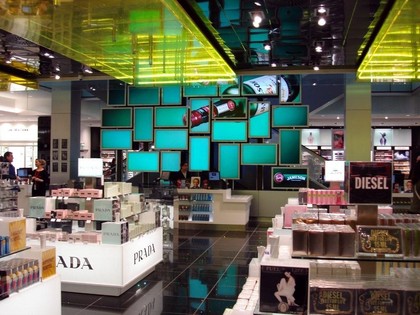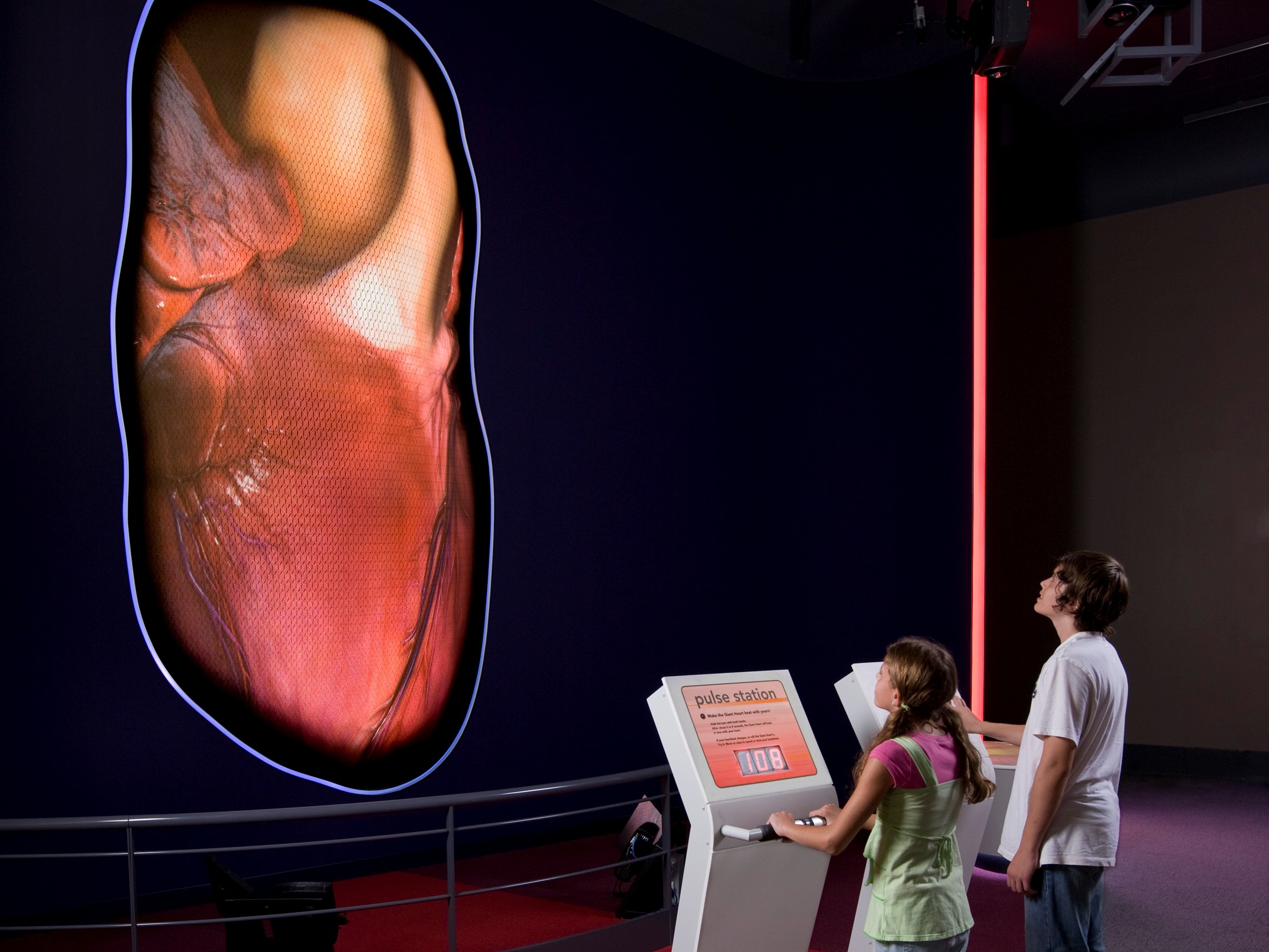What will the high street look like in 2020?
In terms of stores making the most technically impressive uses of new 3D audio-visual technologies, we expect to see the likes of Nike, Apple and Disney's own stores – in addition to other similar aspirational brands – being right at the cutting edge, as does AV tech specialist and consulting editor on AV Magazine, Peter Lloyd.
"You can see the model already, because over the last couple of years mobile phone operators such as 3 and Orange have started to make their shops into places that are far more than somewhere to just buy handsets," notes Lloyd.
"They are aiming to build the brand through offering shoppers an experience of what the 'brand lifestyle' is all about through using video-walls, large screen projectors at the back of the store, lounging areas, interactive technologies to let consumers choose products and explore everything else connected to that particular mobile brand."

FORWARD THINKING:Heathrow's Terminal 5 makes use of the latest AV tech in its retail zones
The AV specialist adds that the other analogous example here is something like the Nike Town Store, where the ways in which the stores have promoted the brand have "developed through a series of stages – they started out having big screen projection areas, then they went to very localised interactive screens outlining everything about the shoes, and now they are going back to a blend of the two."
High street retailers have been kind of feeling their way towards this kind of interactive branding experience in recent years, "towards an overall experience that will help them to boost sales" says Lloyd.
"So the technology is there but not yet fully implemented," he adds, noting that well-established tech such as Bluetooth-enabled touchscreen interactive windows and online purchasing points within the store (or on the web or via dedicated) mobile apps, for when the store is closed are still increasingly (and at times, slowly) being implemented in new ways by high street brands.
Sign up for breaking news, reviews, opinion, top tech deals, and more.
"Basically, as the so-called 'digital natives' start to buy more of this stuff, and the tech becomes more affordable, companies will get their heads around how they can capture data and how they can provide information that the customer has individually requested – so you are talking about a lot of interactivity using lots of very different types of interfaces… everything from little balls for young children to roll around through to complicated touchscreens in Apple Stores."
And beyond that?
In five or ten years' time, Lloyd thinks we will increasingly start to see stores encouraging the use of cameras on people, making consumers into avatars, so that they can actually project themselves virtually into various environments within the store.
"You've already started to see that experimentally with things like clothing in stores in the US and Germany," he notes. "Where people have been able to have 3D pictures taken of their full body rotating and then try on clothes virtually."

HEART BREAK: This 3D interactive model of the human heart points the way for in-store attractions
Lloyd thinks that we are approaching a point now at which these types of games and lifestyle scenarios become increasingly cost-effective (and easy understandable profit-drivers) for clothing and lifestyle retailers. Beyond that, he talks of the increasing use of OLED wrap-around screens and 'paint-on' style displays in store.
"In a sense we are talking Minority Report for real," says Lloyd. "A lot of those things that were in that film are now easily possible – it is just a matter of economics and of stores marketing their brand management around how they actually make use of these technologies… essentially to continue to make the store a more exciting place to be."
Anders Locke, marketing director at 3D projection specialists projectiondesign is equally excited about Steve Jobs' vision for the future of high street retail, telling TechRadar:
"At times of the internet and internet shopping using tools such as iPhones, it's never been easier to get goods delivered to the consumers home and it is generally cheaper.
"What we are talking about here is an enjoyable and interactive shopper experience that combines people and shopping places. Through audio-visual technologies, the experience is key and can even be enhanced using other sensory elements such as taste, smell and touch. Using a visual image, such as a projected one, this tends to work on the most powerful of senses.
"Creating a unique visual experience will enable retailers to lure the consumers in, and make the shopping experience enjoyable and possibly even educational. We are seeing our projectors traditionally used for the display in museum environments now being used in these types of new retail applications more and more."
So the future of retail is increasingly cheaper goods for consumers, with mobile and online price comparison apps pushing prices down and forcing the major high street retailers to look to 3D, OLED and other new and emerging entertainment technologies in order to continue enticing us all into their flagship stores. So as stuff becomes cheaper, heading down to the high street is set to become loads more fun.
-------------------------------------------------------------------------------------------------------
Liked this? Then check out Is this the ultimate high-tech restaurant?
Sign up for TechRadar's free Weird Week in Tech newsletter
Get the oddest tech stories of the week, plus the most popular news and reviews delivered straight to your inbox. Sign up at http://www.techradar.com/register
Current page: The future, part 3: 3D virtual avatars in-store
Prev Page The future, part 2: Mobile shopping apps